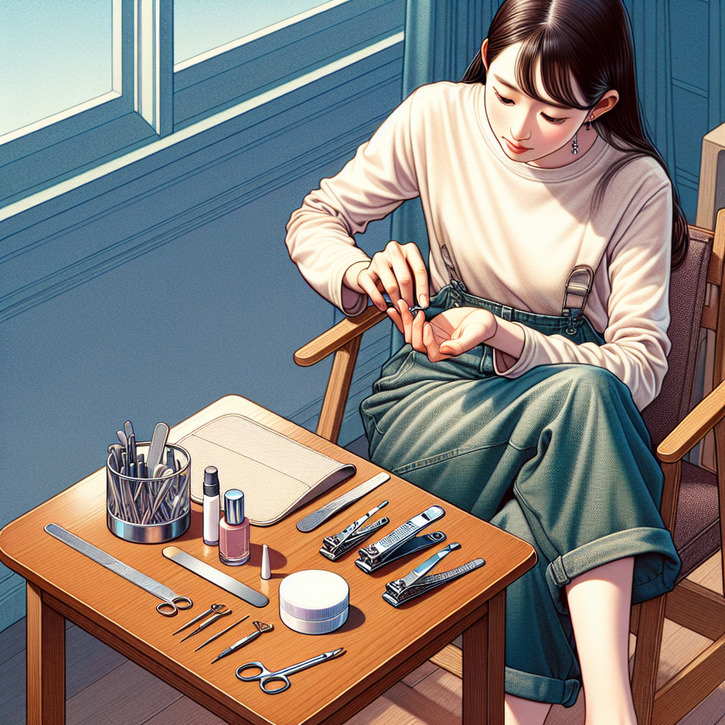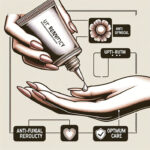Black Toenail Prevention: Tips to Keep Your Feet Healthy

Getting to Know the Black Toenail Phenomenon
So, What’s Up with a Black Toenail? Causes and Clues
A black toenail isn’t just an aesthetic hiccup—it can be your body’s not-so-subtle way of saying, “Hey, something’s off down here!” Often, that dark shade is due to blood pooling under the nail, usually after a bump, repeated pressure, or sometimes as a flag for other health issues. You might just notice a little dark spot or, in some cases, the entire nail might turn black, with a bit of pain or discomfort hinting at the problem. Catching these early signals is super important so you can take care of your foot before things escalate.
The Ripple Effect of a Black Toenail on Overall Foot Health
Believe it or not, a black toenail isn’t a stand-alone issue—it can actually be a clue about your overall foot health. When you spot changes in your nail’s color or structure, it might be a sign of circulatory issues, fungal invaders, or even stress from repetitive activities. Healthy feet are the foundation for comfort and mobility, and neglecting even minor changes can lead to pain or bigger problems down the line. Keeping an eye on your feet from the get-go is a smart way to ensure that your entire foot stays in tip-top shape.
Spotting the Difference: Black Toenails Versus Other Nail Problems
It can be a bit of a puzzle sometimes to tell whether your black toenail is due to an injury or something else like a fungal infection or a sign of a broader health issue. Other nail problems might come with thickening, crumbling, or peeling that just doesn’t match up with what you’d expect from a simple bruise. Observing the look of your nail and any accompanying pain can give you a heads-up about what’s really going on. And if in doubt, chatting with a professional can clear things up whether it’s trauma, an infection, or something else entirely.
Common Culprits Behind a Black Toenail
How Trauma and Injuries Lead to Black Toenails
Let’s face it—trauma tops the list when it comes to causing a black toenail. Whether you stub your toe, drop something heavy on your foot, or endure repeated friction from running, the tiny blood vessels under your nail can crack, leading to a pool of blood that ends up dark or black. Even athletes often find themselves in this situation after a grueling practice. Remember, those little injuries can add up over time, and if you’re noticing more discomfort or discoloration, it might be your body’s way of asking for a bit of a break.
Fungal Infections and Other Underlying Issues
Sometimes, a black toenail isn’t all about trauma. In some cases, it’s the result of pesky fungal infections or other health conditions. These infections can mess with your nail bed, making your nails thicker, brittle, or discolored. And if you’re dealing with conditions like diabetes or poor circulation, your nails might be more vulnerable to these kinds of issues. Being aware of these factors is super helpful since keeping these underlying conditions in check can make a big difference for both nail health and overall foot well-being.
How Your Shoes Might Be to Blame
Believe it or not, your everyday footwear can play a major role in the emergence of a black toenail. Shoes that are too tight, don’t fit well, or simply lack proper cushioning can create constant pressure on your toes. Over time, that friction can cause bruising and a buildup of blood right under the nail. Even the smallest misfit can slowly lead to chronic issues, so it’s a good idea to pick shoes that not only look good but also treat your feet right by offering both space and support.
Keeping Your Feet Happy: Daily Hygiene Tips to Prevent Black Toenails
Daily Cleaning and Drying: A Game-Changer
A solid daily hygiene routine can make all the difference in avoiding black toenails and other nail issues. Washing your feet with warm water and a gentle soap removes the dirt, bacteria, and sweat that build up through the day. And don’t forget to really dry your feet, especially between the toes—this helps keep pesky fungi at bay. These simple steps not only keep your nails in great shape but also leave your feet feeling fresh all day long.
Trim, File, and Shine: Nail Care 101
Regular nail care is another cornerstone of keeping black toenails at bay. When you trim, make sure to cut your nails straight across instead of curving the edges, which helps prevent ingrown nails. Always use a clean, sharp clipper, and a little file afterward to smooth out any rough edges. Long, jagged nails might look fun, but they can set the stage for accidental injuries. A little bit of regular grooming goes a long way in keeping your nails—and overall foot health—a-okay.
Moisturizing and Exfoliating: The Dynamic Duo for Healthy Nails
Keeping your feet moisturized and exfoliated plays a big role in warding off black toenail trouble. Dry, cracked skin can put extra pressure on your nails, which might eventually lead to discoloration or injury. After a shower, slather on a quality foot cream and treat your feet to an occasional gentle scrub. Exfoliating gets rid of dead skin cells and prevents calluses from forming, while well-moisturized cuticles provide an extra layer of defense. It’s a small daily indulgence that pays big dividends in foot health.
Finding the Perfect Footwear to Steer Clear of Black Toenails
Choosing Shoes That Fit Like a Dream
The shoes you pick can really make or break the battle against black toenails. It’s all about getting a good fit: look for shoes that offer plenty of room for your toes and solid arch support. A shoe that fits snugly—but not too tight—allows your foot to move naturally, reducing the chance of unwanted pressure on your toenails. Spend some time trying out different styles and sizes because the right pair can be a game changer in preventing those annoying injuries.
Boosting Protection with Gear and Orthotics
If you’re into high-impact sports or have a history of foot injuries, don’t overlook the power of protective accessories and orthotics. Whether it’s specialized socks, toe guards, or cushioned inserts, these helpers can distribute pressure evenly across your feet. Orthotic devices—whether custom-made or grabbed off the shelf—offer extra stability and even address imbalances that might be leading to nail trauma. While these options might seem like extra steps at first, they can seriously lower your risk of injury and help keep your feet in top condition.
Dodging Common Footwear Pitfalls
Besides choosing the right pair, it’s just as important to steer clear of shoes that are past their prime. Worn-out shoes or those that no longer offer proper support can lead to uneven pressure on your feet, eventually causing issues like a black toenail. It’s wise to avoid high heels or really narrow shoes for too long, as they tend to squish your toes. Give your shoes a once-over now and then to check for signs of wear—this extra mindfulness goes a long way in keeping your nails and feet happy.
When It’s Time to Call in the Pros: Medical Help for Black Toenails
Over-the-Counter Treatments: Your First Line of Defense
For those early days when your toenail is just starting to darken or bruise, over-the-counter treatments can be your go-to. Topical antifungal creams, antiseptic washes, or medicated nail lacquers can often do the trick if it’s a case of minor trauma or a mild fungal problem. Just be sure to follow the directions and keep an eye on how your nail reacts to the treatment. Though these remedies are handy, they aren’t always the silver bullet, so staying vigilant is key.
Knowing When to Seek Professional Help
While many times a black toenail can clear up with proper care, there are moments when you’ll need professional advice. If the discoloration sticks around, spreads, or comes with increased pain, swelling, or signs of infection, it’s time to see a podiatrist. These experts have the know-how and modern tools to dig deep into what’s causing the nail issue—be it poor circulation, an infection, or another underlying condition. Getting help early can make all the difference, saving you from more serious complications down the road.
Balancing Home Remedies with Professional Guidance
Figuring out whether to stick with home remedies or seek a doctor’s advice can be a bit of a balancing act. Sure, warm soaks and natural antiseptics might soothe a minor case, but if the dark discoloration persists or worsens, you’re better off getting a professional opinion. Think of home care as a helpful sidekick rather than a complete substitute for expert guidance. When you combine a bit of DIY care with timely visits to a specialist, you’re setting yourself up for the best possible outcome.
Making Lifestyle Tweaks to Boost Foot Health and Sidestep Black Toenails
Get Moving: Exercise for Better Circulation
Regular exercise isn’t just about keeping in shape—it’s also a great way to boost blood flow to your feet and nails. Whether you’re taking brisk walks, hopping on a bike, or doing some gentle stretching, these activities help deliver vital oxygen and nutrients to your nail beds. Better circulation means quicker healing of little injuries and a lower risk of your nails turning dark. So, lace up those sneakers and make a consistent move for healthier, happier feet.
Eating Right: Nutrition Tips for Strong Nails
Believe it or not, what you eat plays a huge role in the strength and resilience of your nails. A balanced diet full of vitamins, minerals, and proteins can really fortify your nails. Nutrients like biotin, vitamin E, and zinc are particularly important for keeping your nails at their best. Embrace leafy greens, nuts, fish, and lean meats as part of your regular menu, and you’ll not only support nail strength but also help overall circulation and health—keeping your feet robust and less prone to those pesky injuries.
Managing Chronic Health Issues that Affect Your Feet
If you’re juggling chronic conditions like diabetes or arthritis, extra care for your feet becomes a priority. These conditions can slow down healing and make you more vulnerable to infections or injuries—leading to things like black toenails. Keeping a close watch on your condition and scheduling regular check-ups with your healthcare provider can prevent minor issues from turning into major headaches. A good mix of proper medication, exercise, and daily self-care can help protect your nails and overall foot health.
Daily Habits and Routine Checks to Keep Black Toenails at Bay
Set Up a Foot Care Routine That Works for You
Sometimes, the simplest habits can have the biggest impact. Creating a regular foot care routine—think daily cleaning, thorough drying, and a bit of moisturizing—can make all the difference in keeping black toenails away. Taking just a few extra minutes each day to check your nails for any signs of trouble can help catch issues before they become serious. This proactive approach is a little investment of time for a big payoff in overall foot health.
Early Detection: Keep an Eye on Your Toenails
Early detection is truly your best friend when it comes to tackling foot issues. Make it a habit to inspect your toenails in a bright, well-lit spot—using a mirror can help you see those hard-to-reach areas. Look out for any changes in color, shape, or texture. Noticing these signs sooner rather than later means you can jump in with home remedies or consult a specialist before things escalate.
Build a Personalized Foot Health Game Plan
Finally, why not invest a little time in creating a personalized plan for your foot health? This could cover everything from your daily hygiene habits and nail grooming routines to specific exercises that boost circulation, and even dietary tweaks to support nail strength. Consider keeping a journal or using a handy app to track any changes over time. A tailored plan doesn’t just empower you with better knowledge—it also reinforces your commitment to keeping your feet in the best possible shape.





